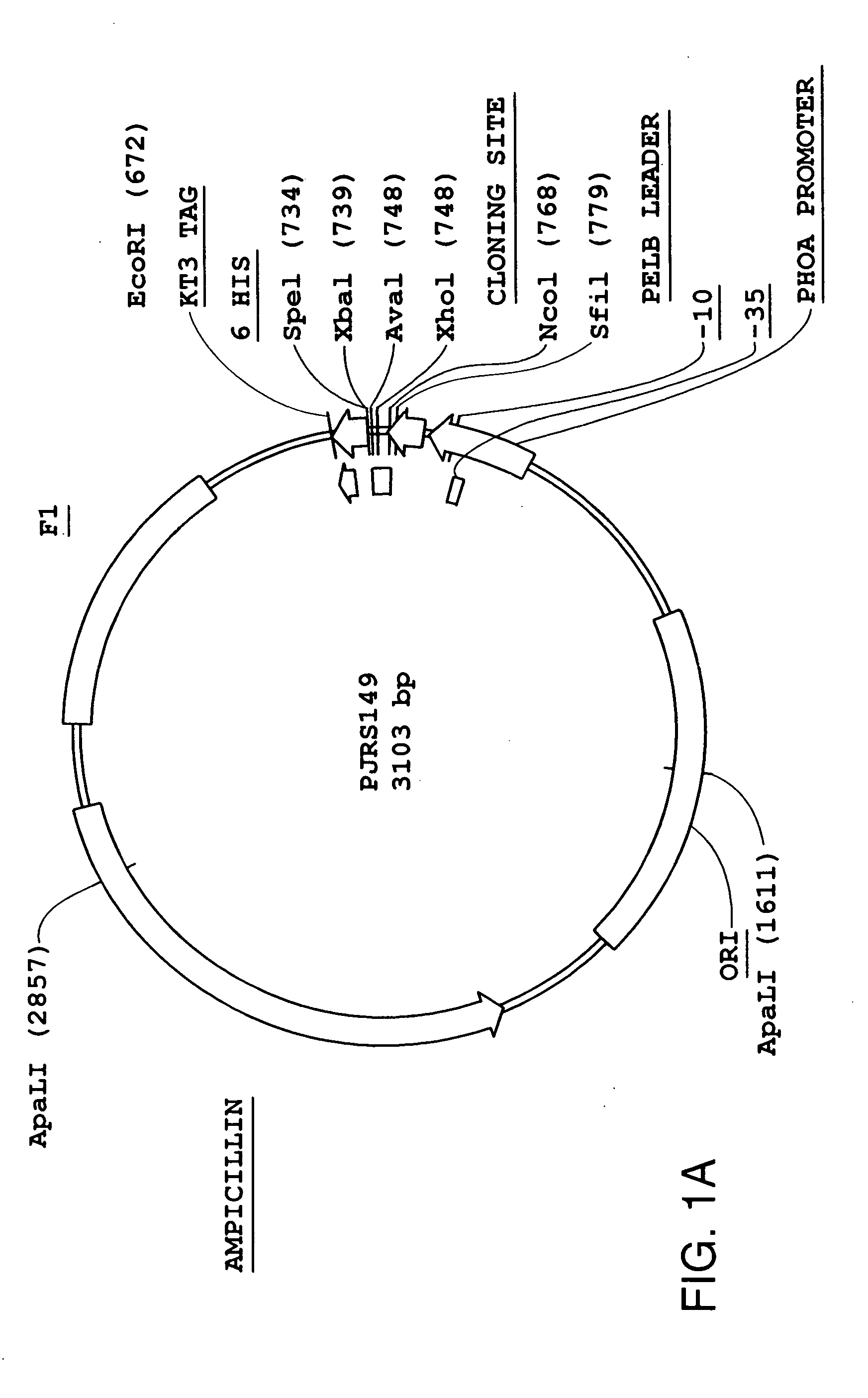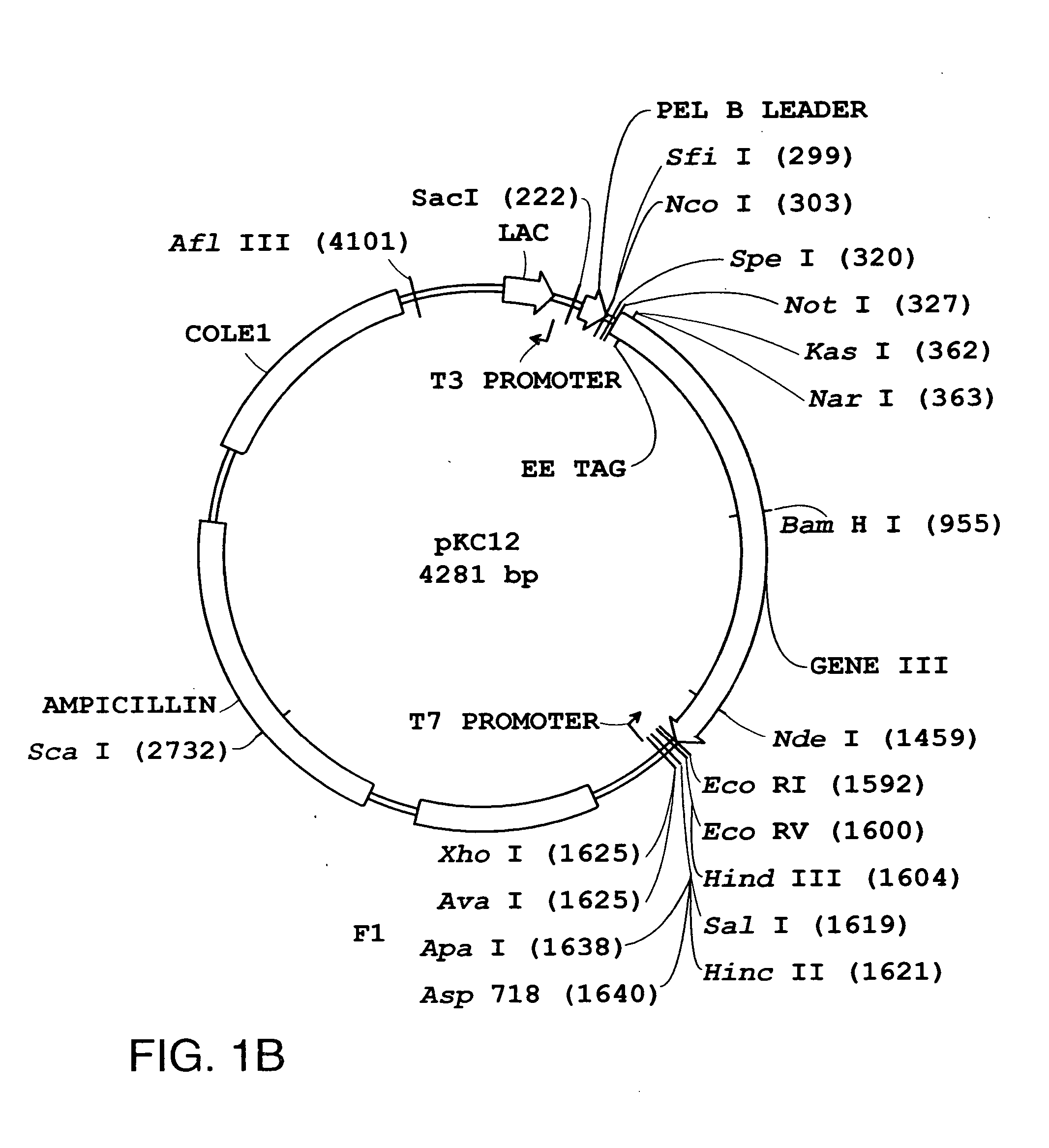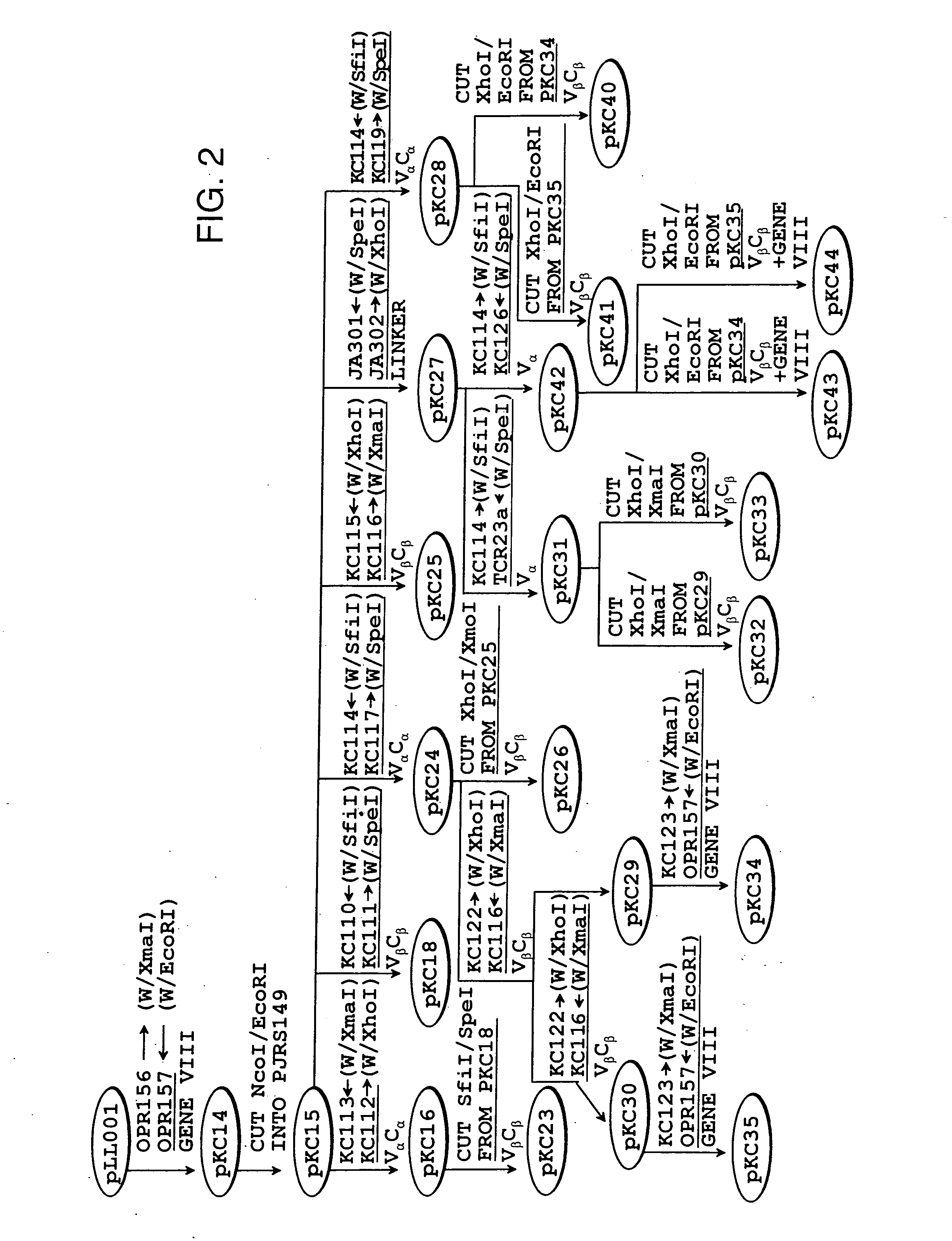Fusion proteins comprising bacteriophage coat protein and asingle-chain T cell receptor
a technology of bacteriophage coat protein and asingle which is applied in the field of fusion proteins comprising bacteriophage coat protein and a single-chain t cell receptor, can solve the problems of reducing tcr yield, negatively affecting tcr stability and functionality, and difficult to isolate tcrs in significant quantities, so as to enhance the solubility and functionality of sctcr fusion proteins, the effect of enhancing
- Summary
- Abstract
- Description
- Claims
- Application Information
AI Technical Summary
Benefits of technology
Problems solved by technology
Method used
Image
Examples
example 1
Construction of Soluble scTCR Fusion Proteins Protein
[0140] The DNA sequence of the murine DO11.10 cell TCR has been reported (Kappler, J. et al. PNAS (1994) 91 8462). The TCR recognizes and binds a chicken ovalbumin peptide spanning amino acids 323-339 (ie. OVA) in the context of an I-Ad MHC class II molecule. DNA encoding the TCR was prepared generally along the lines of the method disclosed in Kappler and Marrack, supra.
[0141] Briefly, mRNA from 1×106 DO11.10 cells was isolated using oligo-dT coated magnetic beads in accordance with the manufacturer's instructions (Dynal). TCR α chain cDNA was made by incubating a mixture containing the C-α specific “back” primer, KC113 (SEQ ID No. 6) along with the DO11.10 mRNA. Subsequently, standard amounts of nucleotides and reverse transcriptase were added to the mixture to form cDNA. The β chain cDNA was made in a similar manner with the exception that the “back” primer KC111 (SEQ ID NO.4) was used instead of the KC113 primer. Alpha chain...
example 2
Vectors for Expressing scTCR Fusion Proteins
[0143] The scTCR DNA provided in Example 1 was inserted into vectors bearing a strong (phoA) or weak (lacZ) bacterial promoter. The vectors used to express the scTCR were the pJRS149 and pKC12 DNA vectors illustrated in FIGS. 1A and 1B, respectively. These vectors allow fusion of the scTCR to a bacteriophage coat protein. The construction of DNA vectors encoding fusion proteins is schematically outlined in FIG. 2 and as follows.
[0144] A. DNA Vector pJRS149 [0145] The pJRS149 DNA vector is a phagemid with a pBluScript™ (Invitrogen) backbone. The vector was used to produce soluble scTCR fusion proteins for use in bacteriophage display experiments described in Examples 14 to 18 which follows.
[0146] B. DNA Vector pKC12 [0147] DNA encoding gene III was cloned into the pKC12 vector illustrated in FIG. 1B.
[0148] C. DNA Vectors pKC14, and Vector pKC15 [0149] The gene VIII DNA sequence was PCR amplified from fd tet bacteriophage (ATCC No.37000)...
example 3
Cloning DNA Encoding Fusion Proteins into DNA Vector pEN2
[0160] Expression of the soluble scTCR produced in Example 1 was increased by subcloning into the pEN2 vector illustrated in FIG. 5. The pEN2 vector includes a phoA promoter, a gene 10 ribosomal binding site, and a modified pel B leader. Soluble scTCR inserts in a pEN2 vector format are schematically illustrated in FIG. 6A and FIG. 6B and described as follows. In FIG. 6A and 6B, the DNA vectors were constructed from the pEN2 vector.
[0161] A. Construction of DNA Vector pKC60 [0162] The pKC60 vector was made by introducing a 1204 bp SfiI-EcoRI fragment into pEN2. The SfiI-EcoRI fragment consisted of the V-α and V-β, C-β domains. The fragment was made by amplifying pKC51 DNA as template and using primers KC114 (“front” SEQ ID NO: 7 ) and JWTCR208 (“back” SEQ ID NO:75). The JWTCR209 primer included a EE-tag and a XmaI site 3′ of the C-β domain. The addition of an XmaI site facilitated cloning of the gene III and gene VIII genes....
PUM
| Property | Measurement | Unit |
|---|---|---|
| induction time | aaaaa | aaaaa |
| OD/ml | aaaaa | aaaaa |
| OD/ml | aaaaa | aaaaa |
Abstract
Description
Claims
Application Information
 Login to View More
Login to View More - R&D
- Intellectual Property
- Life Sciences
- Materials
- Tech Scout
- Unparalleled Data Quality
- Higher Quality Content
- 60% Fewer Hallucinations
Browse by: Latest US Patents, China's latest patents, Technical Efficacy Thesaurus, Application Domain, Technology Topic, Popular Technical Reports.
© 2025 PatSnap. All rights reserved.Legal|Privacy policy|Modern Slavery Act Transparency Statement|Sitemap|About US| Contact US: help@patsnap.com



